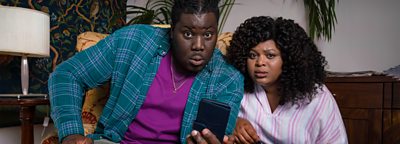Please note the information on this page applies to our diversity commitments active from April 2021 to March 2024. Please see our new set of commitments to diverse content, companies and talent announced in September 2024.
We prioritised £100 million of our existing TV commissioning budget over three years – from April 2021 to March 2024 - to spend on diverse content. Find out how we achieved our target on the diversity commissioning code of practice progress report 2023/24 (pdf).
This financial commitment gave us a clear commissioning focus to ensure we look for, develop and choose programmes that represent all audiences across the UK, as well as accelerating the pace of change on diversity and inclusion across the sector as a whole.
The £100m was a floor not a ceiling – and there are other opportunities for diverse companies and talent across the whole slate.
Our criteria:
Programmes must meet two of the following criteria to count towards the commitment:
1. Diverse stories and portrayal on-screen
2. Diverse production leadership
3. Diverse company leadership
Each criteria is underpinned by detailed definitions which are set out below:
1. Diverse stories and portrayal on-screen
Representing all audiences around the UK
On screen representation includes all protected characteristics: age, disability, gender reassignment, marriage/civil partnership, pregnancy and maternity, race, religion or belief, sex, sexual orientation. We also include social class. Find out more about protected characteristics on the .
Within this criteria, a programme must comply with at least two of the following on-screen measures to be considered as diverse:
a. Landmark portrayal
Has a diverse storyline, topic or character front and centre of the proposition and narrative. Examples of landmark portrayal include Before Grenfell: A Hidden History, A Suitable Boy, People Just Do Nothing and RuPaul’s Drag Race UK.
b. Incidental and integrated portrayal
Includes diverse representation, where it is relevant to that particular story, character or contributor. Incidental portrayal means there is no direct comment on that characteristic, the character or contributor just ‘happens to be’ diverse. For instance a multi-racial couple in a cookery competition or a gay character in a continuing drama. Examples include Eat Well For Less?, Call the Midwife and Strictly Come Dancing.
c. Diverse on-screen talent
The talent most regularly associated with the programme or series are diverse. For scripted programmes this means two or more of the main/regular actors. For unscripted programmes, one or more of the regular talent must be diverse. Examples include This Country, I May Destroy You and The Ranganation.
2. Diverse production leadership
Senior off-screen decision makers involved in shaping and making the programme
To qualify against this criteria at least two individuals in senior decision-making roles on the production must be from one of three under-represented groups:
- Black or minority ethnic
- Disabled
- Working class
We now expect all the production teams we work with to be at least 20% diverse, and you can find out more about this target on the diverse production teams page, so to qualify in this category we focus only on the senior creative roles within the production.
For scripted programmes the following roles qualify as senior creative decision makers:
- Executive Producer
- Director
- Writer
- Script Editor
- Story Producer
- Line Producer
- Head of Development
For unscripted programmes the following roles qualify as senior creative decision makers:
- Executive Producer
- Series Producer
- Head of Development
- Production Executive
- Line Producer
- Production Manager
- Director
- Producer
We appreciate that some productions have bespoke roles such as lead writers or casting producers who may make key decisions, and so there can be some flexibility around which roles can be counted. This will need to be agreed as part of the formal discussion between the commissioner and the producer ahead of the programme being commissioned.
3. Diverse company leadership
Senior roles involved in shaping creative or operational strategy within the production company
To qualify as a diverse led company at least two individuals in leadership roles must be from one of the following three under-represented groups:
- Black or minority ethnic
- Disabled
- Working class
Individuals must have been in their role for a minimum of six months.
These roles are:
- Managing Director
- Creative Director
- Director of Production
- Executive Producer
- Head of Development
Please note, for smaller companies who have less than four of the listed roles, then a target of 50% of leadership roles will apply. For co-production partnerships, the criteria for diverse-leadership will be applied to the production company who owns the intellectual property.
Both the criteria and the definitions were established in consultation with the Lenny Henry Centre for Media Diversity at Birmingham City University, and have been welcomed by Ofcom. They enable complete transparency of ����ý expectations on commissions that will make a significant contribution to diversity and inclusion.
How we will decide and monitor if a commission meets our criteria
Our commissioning teams will decide whether a commission falls into any of the three categories, supported by the ����ý Creative Diversity Unit.
We have created opportunities for production companies to flag if they meet any of the three criteria throughout the commissioning process, via the company leadership questionnaire, the commissioning specification, and the production progress reports.
To ensure we are meeting our commitment we will monitor our slate on a rolling basis across the three years, and adjust our strategy if we are falling short. We will report our progress every year.
We will always commission programmes based on the strength of the idea, and its appeal to our audiences. If an idea doesn’t meet these criteria, there are other opportunities for it to be commissioned elsewhere on the slate if it meets our strategy.
The definitions allow for complete transparency of ����ý expectations on commissions that will make a significant contribution to diversity and inclusion.
Company leadership questionnaire
To help us determine if a company has diverse leadership (criteria three) and to provide greater visibility of representation across the industry we ask all our suppliers to complete a company leadership questionnaire. New suppliers will be sent a link to the questionnaire when they have successfully signed up to the PiCoS submission system. The questionnaire can be resubmitted if the company leadership changes between pitching an idea and its commission. Find out more about accessing PiCoS.
Commissioning specification, progress report and end of production report
Information included in the commissioning specification along with the progress report allows us to record whether a programme has diverse production leadership (criteria two). Additionally, producers are asked to report on the diversity of their production leadership roles within the end production report.
The end of production report, progress report and sample commissioning specification can be accessed via the Production and delivery website.
Under-represented groups: the definitions
The definitions for the three under-represented groups are as follows:
Those from Black, Asian or minority ethnic backgrounds.
Defined as:
- Black/African/Caribbean/Black British. Selection: Black African, Black British, Black Other, Black Caribbean, Other Black background
- Asian/Asian British. Selection: Asian British, Bangladeshi, Chinese, Indian, Other Asian background, Pakistani
- Mixed/Multiple Ethnic Groups. Selection: Mixed Ethnicity
- Other Ethnic Group. Selection: Middle/Near Eastern/Arab, any other Ethnic Group
Those with lived experience of a disability
Defined as:
Under the Equality Act 2010 a person is disabled if they have a physical or mental impairment that has a ‘substantial’ and ‘long-term’ negative effect on their ability to do normal daily activities.
Those from lower-income backgrounds – to achieve socio-economic diversity (SED)
We use ‘parental occupation’ as the key factor to determine this group ie anyone whose parents were in ‘routine and manual occupations’ at the age of 14. For example:
- Semi-routine manual and service occupations such as: postal worker, machine operative, security guard, caretaker, farm worker, catering assistant, sales assistant.
- Routine manual and service occupations such as: HGV driver, cleaner, porter, packer, labourer, waiter/waitress, bar staff.
We appreciate that socio-economic diversity is not as established an industry standard as ethnicity and disability – and we are working with other Broadcasters, The Creative Diversity Network and Pact to improve the consistency of definitions, monitoring protocols and reporting through Diamond. In the meantime, we will work with producers to make positive progress, and you can find useful resources to help in the sections below.
Support for new diverse-led companies
We will hold an open event for production companies that don’t have a current relationship with the ����ý. For those with exciting ideas that meet our strategy we will introduce them to commissioners to discuss their ideas further, and where we think a company is of particular interest we will give them a commissioning mentor and/or support them through the small indie fund.
Resources to help companies
The ����ý Creative Diversity team are available to provide guidance and identify potential opportunities for productions in terms of talent.
-

����ý Creative Diversity website
A wealth of useful information including a list of organisations which can help indies recruit and retain on and off-screen talent from underrepresented groups. -
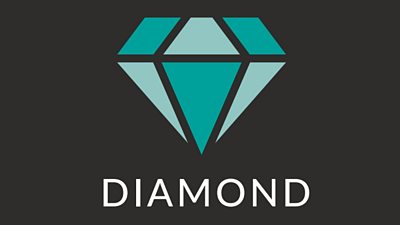
Diamond information
Find information about Diamond diversity monitoring and how to complete both actual and perceived diversity data. -
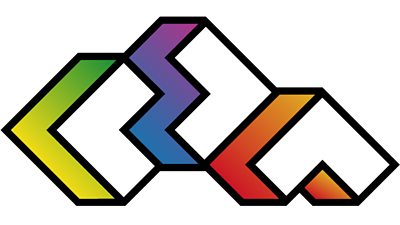 Advice and resources to help productions complete Diamond forms and advice about engaging teams to do so.
Advice and resources to help productions complete Diamond forms and advice about engaging teams to do so. -
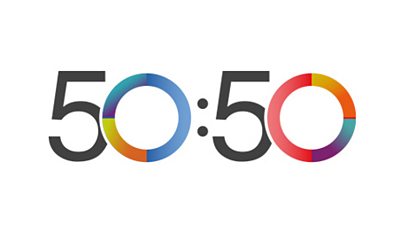
50:50 database
A toolkit designed to help production teams improve the range of their onscreen contributors in terms of gender, disability and ethnicity. -

The diversity development fund
Fund available to support programme makers to develop on and off-screen talent where it is above and beyond what can be delivered through the production budget.
Contacts for further support
-
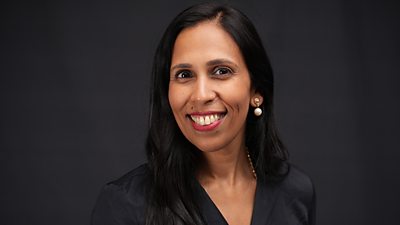
Jessica Schibli
Head of Creative Diversity -

Iyare Igiehon
Support for scripted TV and Radio suppliers -

Michelle Matherson
Support for unscripted TV suppliers -

Stefan Gibbons-Arif
Support for Children’s & Education and Nations suppliers -

Nichola Garde
Disability Lead for TV and Nations suppliers -

Kay Ashton
Creative Diversity Partner, Sport, Radio and digital disability
Explore the site
-
Briefs and contacts
Commissioners and ideas -
Supporting indies
How we commission and work -
Skills and training
Industry training and skills development
